ZLINE DW304H24, DW30424, DW771324, DW771418, DWSSH18 Installation Manual
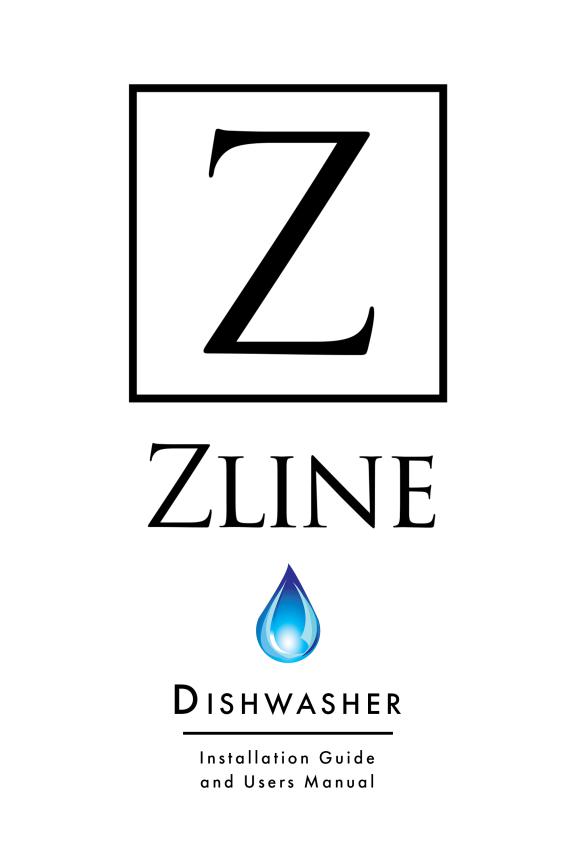

CONTENTS
|
INSTALLATION GUIDE |
|
|
|
|
|
|
|
SAFETY INSTRUCTIONS |
2 |
|
Important Safety Instructions |
|
|
Grounding Instructions |
|
|
BEFORE INSTALLING |
4 |
|
Electric Shock Hazard |
|
|
PREPARING THE DISHWASHER ENCLOSURE |
5 |
|
Product Dimensions |
|
|
Enclosure Dimensions |
|
|
INSTALLING THE DISHWASHER |
6 |
|
Step 1: Check the Parts and Tools
Step 2: Select the Best Location for the Dishwasher
Step 3: Check Water Supply Requirements and Cautions
Step 4: Check the Electrical Requirements and Cautions Step 5: Unpacking and Inspecting the Dishwasher Step 6: Preparing the Dishwasher
Step 7: Placing the Dishwasher and Connecting the Hot Water Supply Line Step 8: Leveling the Dishwasher
Step 9: Securing the Dishwasher Step 10: Connecting the Drain Hose Step 11: Wiring Connections
Step 12: Completing the Installation
SPECIFICATIONS |
24 |

CONTENTS
USERS MANUAL |
|
|
|
|
|
SAFETY INSTRUCTIONS |
26 |
Proper Installation |
|
Basic Precaution Before Use |
|
FEATURES OF YOUR NEW DISHWASHER |
28 |
Specification |
|
Filter System |
|
Smart Wash System |
|
OPERATING INSTRUCTIONS |
32 |
Control Panel |
|
Cycle Chart |
|
PREPARING AND LOADING DISHES |
36 |
Loading the Lower Basket |
|
Loading the Upper Basket |
|
Loading the Silverware Basket |
|
Adding a Dish |
|
Filling the Detergent Dispenser |
|
Filling the Rinse Aid Reservoir |
|
USER MAINTENANCE |
40 |
Cleaning the Exterior |
|
Cleaning the Interior |
|
Cleaning the Nozzles |
|
TROUBLESHOOTING |
41 |

INSTALLATION GUIDE

SAFETY INSTRUCTIONS
Throughout this manual, you’ll see Warning and Caution notes. These warnings, cautions, and important safety instructions that follow do not cover all possible conditions and situations that may occur. It’s your responsibility to use common sense, caution, and care when installing, maintaining, and operating the dishwasher. ZLINE is not liable for damages resulting from improper use.
These warning signs are here to prevent injury to you and others. Please follow them explicitly. After reading this book, keep it in a safe place for future reference.
Important Safety Instructions
WARNING
CAUTION
CAUTION
Hazards or unsafe practices that may result in severe personal injury or death.
Hazards or unsafe practices that may result in personal injury or property damage.
To reduce risk of fire, explosion, electric shock, or personal injury when using the dishwasher, follow these basic safety precautions.
Make sure the machine is grounded to prevent electric shock.
Read all instructions before using the appliance.
Install and store the dishwasher inside, away from exposure to weather.
Do not install the dishwasher near electrical components. Keep the CAUTION dishwasher away from open flames.
Do not install the dishwasher on a carpet as this is a fire hazard.
Do not install the dishwasher in a location where the water may freeze (where the temperature falls below 32°F(0°C). Frozen water in the hoses or pipes may damage the dishwasher.
As with all equipment using electricity, water and moving parts, potential hazards exist. To safely operate this appliance, become familiar with its operation and exercise care when using it.
The dishwasher must be properly grounded. Never connect it to an ungrounded outlet.
2
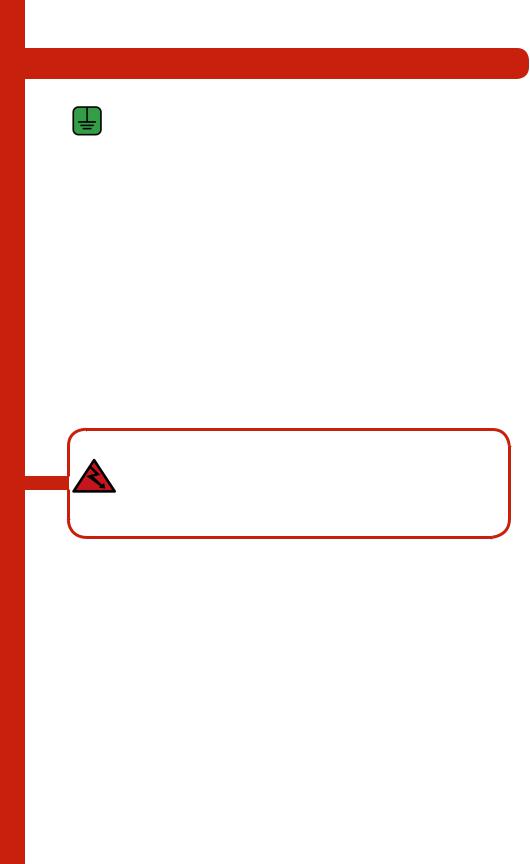
SAFETY INSTRUCTIONS
Prior to removal of original dishwasher and the installation of your new unit, make sure to switch off your circuit breaker. Do not connect the dishwasher until you have completed the installation. Connecting the power cable is the last step
when installing the dishwasher.
All wiring and grounding must be done in accordance with the electrical code applicable to the region.
Grounding Instructions
For a permanently connected appliance:
This appliance must be connected to grounded metal, a permanent wiring system, or an equipment-grounding conductor must be run with the circuit conductors and connected to the equipment-grounding terminal or lead on the appliance.
The dishwasher is very heavy. Do not attempt to move or carry a dishwasher alone. Two or more people are needed to move a dishwasher and avoid potential injuries.
If the power cable is damaged, it must be replaced by the manufacturer, a service agent or similarly qualified person in order to avoid a hazard.
Do not touch the power cable with wet hands.
CAUTION Do not connect another appliance to the same power outlet as the dishwasher.
Make sure to use a new water supply line. Old lines are susceptible to breakage because they become hardened and may cause property damage due to a water leakage.
The dishwasher must be connected to a hot water supply with a temperature between 120°F and 149°F. This temperature range provides the best washing result and shortest cycle time. Temperature should not exceed 149°F to prevent damage to dishes.
Ensure that the water supplied to the dishwasher does not freeze. Frozen water can damage the hoses, valves, pump, or other components.
For a full list of safety information, please refer to the User Manual.
3
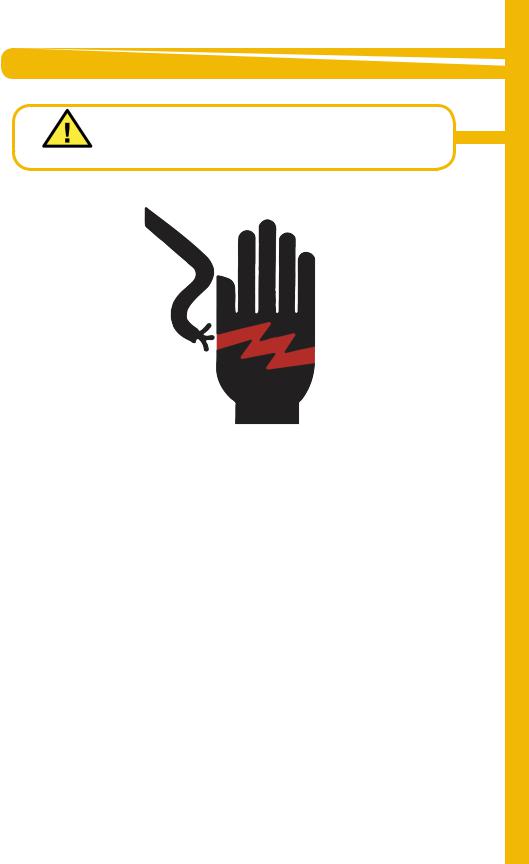
BEFORE INSTALLING
Do not use the dishwasher until it is correctly installed.
Do not push down on the door when it is open.
Do not place excessive weight on the open door.
WARNING
Electric Shock Hazard
Failure to follow these instructions can result in death, fire, or electric shock:  Electrically ground the dishwasher.
Electrically ground the dishwasher.
 Connect the ground wire to the green ground connector in the junction box.
Connect the ground wire to the green ground connector in the junction box.
 Do not use an extension cord.
Do not use an extension cord.
 To reduce the risk of electric shock, fire, or injury to persons, the installer must ensure that dishwasher is completely enclosed at the time of installation.
To reduce the risk of electric shock, fire, or injury to persons, the installer must ensure that dishwasher is completely enclosed at the time of installation.
4
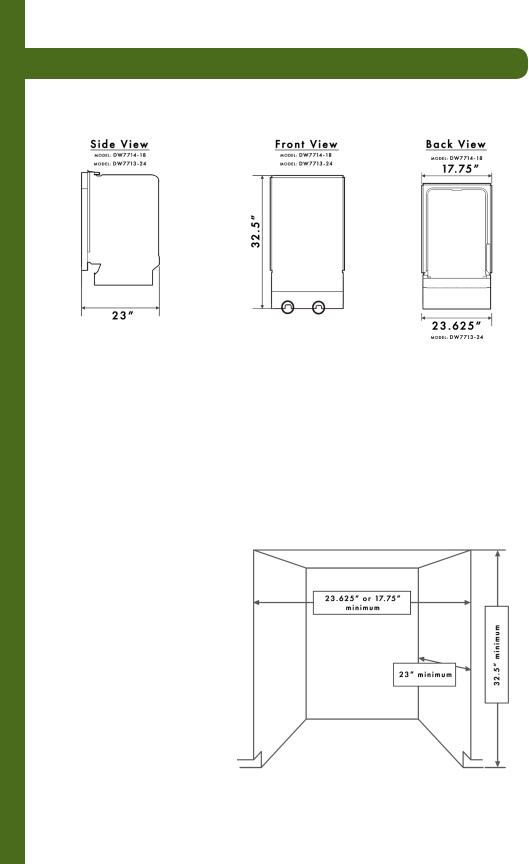
PREPARING THE DISHWASHER ENCLOSURE
Product Dimensions
The water supply line, power cable, and drain hose should go through the space behind the dishwasher. The power cable runs in channels under the dishwasher to connections in the front.
Enclosure Dimensions
This dishwasher is designed to be enclosed on the top and on both sides by a standard residential kitchen cabinet unit.
The installation enclosure must be clean and free of any obstructions.
The enclosure must be at least 23.6 inches wide 23 inches deep and 32.5 inches high. For the front door of the dishwasher to be flush with the
leading edge of the counter top, the counter top must be at least 23 inches deep.
5
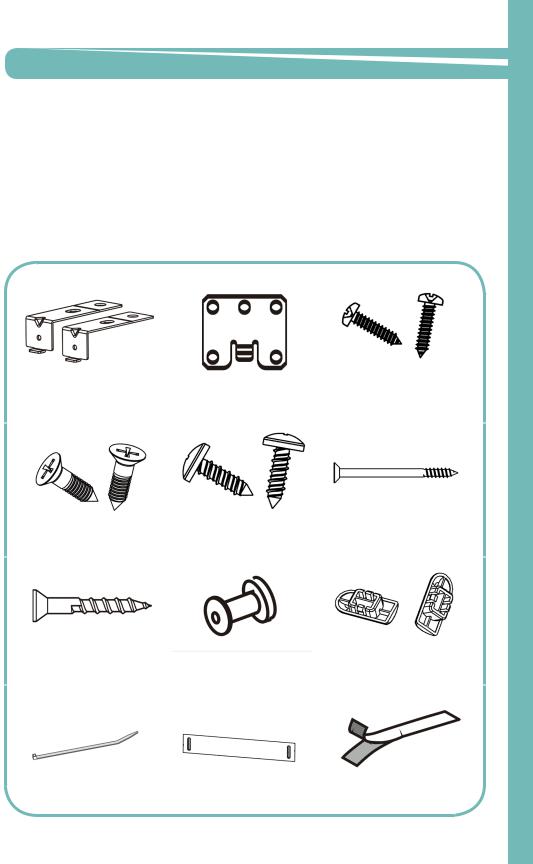
INSTALLING THE DISHWASHER
Be sure that you or your installer follow these instructions closely so that the new dishwasher works properly and that you’re not at risk of injury when washing dishes.
Step 1: Check the Parts and Tools
Before starting on the installation, prepare all the necessary tools and parts required to install the dishwasher. This will save installation time and simplify the installation process. Below are all the parts that are provided with the dishwasher. See step 5.
Installation Bracket #1 x2 |
Installation Bracket #2 x2 |
ST3.9*13 x2 |
|
|
(for the kick plate) |
|
|
|
ST4*14 x10 |
ST3.5*9 x2 |
ST3.5*45 x4 |
(for install brackets 1&2) |
|
(for the decorative door) |
ST3.5*25 x2 |
Decorative Door Hook |
Adjustment Cap x2 |
(for the decorative door hook) |
|
|
|
|
|
Cable Tie |
Kick Plate |
Condensation Strip |
(for the drain hose) |
|
|
6

INSTALLING THE DISHWASHER
Not Provided:
Twist on wire connector |
Strain relief |
Electrical tape & standard |
|
|
duct tape |
Hot water supply line |
90° Elbow |
Tube fittings |
|
|
|
Air gap |
Rubber connector |
Hose clamp |
|
|
|
Power cable |
Teflon tape or sealing |
Decorative door |
|
compound |
|
Do not use plastic tubing. Plastic tubing can deteriorate over time and cause a leak inside the tube fitting. We strongly recommend using copper tubing with a compression fitting or a flexible stainless steel braided hot water supply line.
7
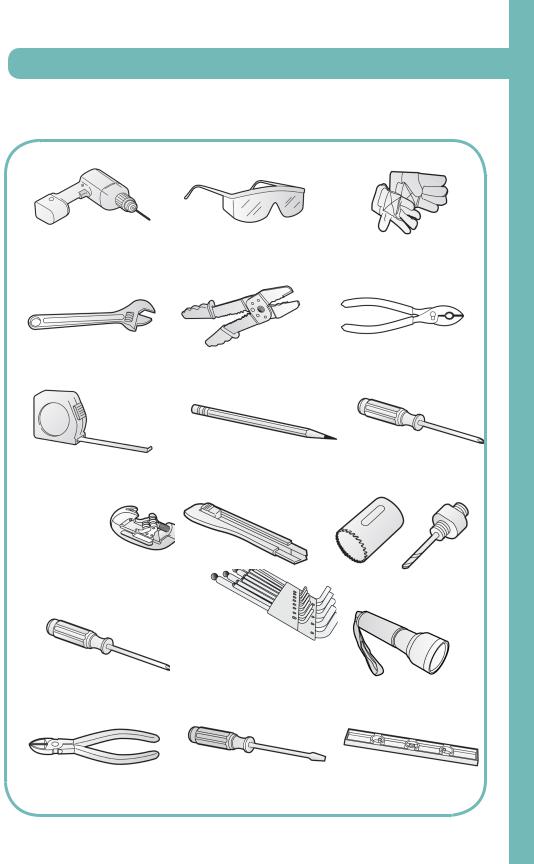
INSTALLING THE DISHWASHER
Tools Required (Not Provided):
Electric drill |
Safety glasses |
Gloves |
|
|
|
Adjustable wrench |
Wire stripper |
Pliers |
|
|
|
Tape measure |
Pencil |
Phillips screwdriver |
|
|
|
Tubing cutter |
Cutting knife |
Hole saw |
|
|
|
Torx t20 |
Hex L-wrench |
Flashlight |
|
|
|
Nipper |
Flat screwdriver |
Level |
8
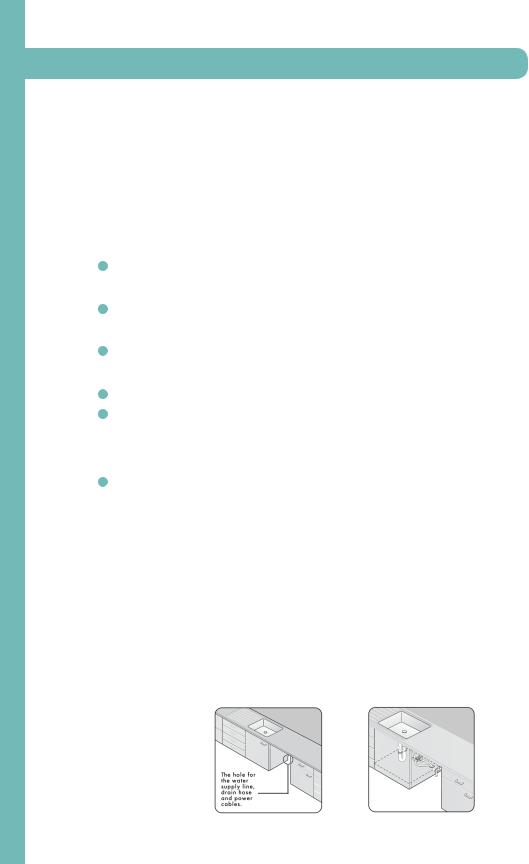
INSTALLING THE DISHWASHER
If the dishwasher is a new installation, most of the installation work must be done before the dishwasher is moved into place. If the dishwasher is replacing an old dishwasher, you must check the exising dishwasher connections for compatibility with the new dishwasher. Replace the existing connections as necessary.
Step 2: Select the Best Location for the Dishwasher
The following criteria are important to ensure the best location for the dishwasher:
The location must have a solid floor that is able to support the weight of the dishwasher.
The location must be near a sink with easy access to the water supply, drain, and electrical outlet.
For the drain to operate properly, the dishwasher should be installed within 9.8 ft of the sink.
The location must let you load your dishes into the dishwasher easily.
The location must have sufficient space for the dishwasher door to open easily and provide enough space between the dishwasher and the cabinet sides (at least 0.1 in).
If the dishwasher is installed in a corner, ensure that the side of the dishwasher is more than 2 inches from the wall or cabinet.
 The wall at the back must be free of obstructions. If this is a new installation, follow these steps:
The wall at the back must be free of obstructions. If this is a new installation, follow these steps:
1.Using a hole saw, cut a hole into the side of the cabinet that hold the sink as shown in Figure 1-1 below.
2.If the base inside the sink cabinet is raised above the kitchen floor and is higher than the connections on the dishwasher, make a hole in the base inside the cabinet and in the cabinet side as shown in Figure 1-2.
Depending on where your electrical outlet is, you may need to cut a hole in the opposite cabinet side.
9 |
Figure 1-1 |
Figure 1-2 |
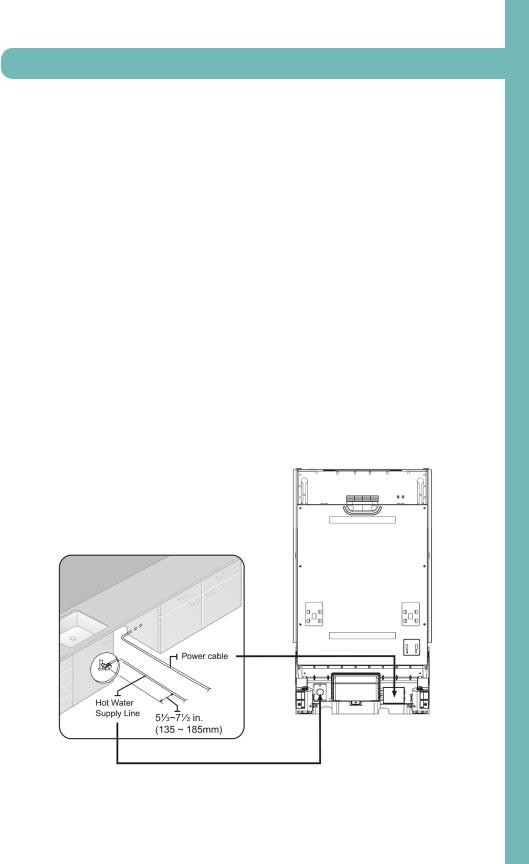
INSTALLING THE DISHWASHER
Step 3: Check Water Supply Requirements and Cautions
 The hot water supply line pressure must be between 0.04-1MPa.
The hot water supply line pressure must be between 0.04-1MPa.
 Adjust the water heater to deliver water between 120°F ~149°F.
Adjust the water heater to deliver water between 120°F ~149°F.
 The dishwasher must be connected to a hot water supply between 120°F~149 °F. This temperature range provides the best
The dishwasher must be connected to a hot water supply between 120°F~149 °F. This temperature range provides the best
washing result and shortest cycle time. Temperature should not exceed 149°F to prevent damage to dishes.
 Ensure that the water supply valve is turned off before connecting the hot water supply line to the dishwasher.
Ensure that the water supply valve is turned off before connecting the hot water supply line to the dishwasher.
 Seal the hot water supply line connections using teflon tape or sealing compound to stop any water leakage.
Seal the hot water supply line connections using teflon tape or sealing compound to stop any water leakage.
 When you install the dishwasher, ensure there is nothing on the drain hose and be careful not to tear it during the installation process.
When you install the dishwasher, ensure there is nothing on the drain hose and be careful not to tear it during the installation process.
Figure 2
10
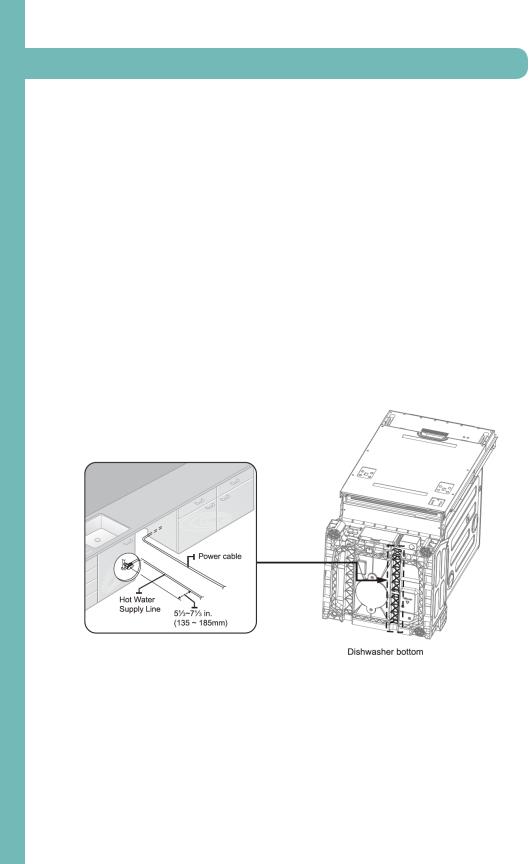
INSTALLING THE DISHWASHER
Step 4: Check the Electrical Requirements and Cautions
The electrical requirements for the dishwasher are as follows:
 In the United States, install in accordance with the National Electric Code/State and Municipal codes and/or local codes.
In the United States, install in accordance with the National Electric Code/State and Municipal codes and/or local codes.
 For cable direct connections.
For cable direct connections.
 Use flexible, armored or non-metallic sheathed, copper wire with a grounding wire that meets the wiring requirements for your local codes and ordinances.
Use flexible, armored or non-metallic sheathed, copper wire with a grounding wire that meets the wiring requirements for your local codes and ordinances.
 Use the strain relief method provided with the wiring junction box or install a U.L.-listed/CSA-certified clamp connector to the wiring junction box. If using conduit, use a U.L.-listed/CSA-certified conduit connector.
Use the strain relief method provided with the wiring junction box or install a U.L.-listed/CSA-certified clamp connector to the wiring junction box. If using conduit, use a U.L.-listed/CSA-certified conduit connector.
11
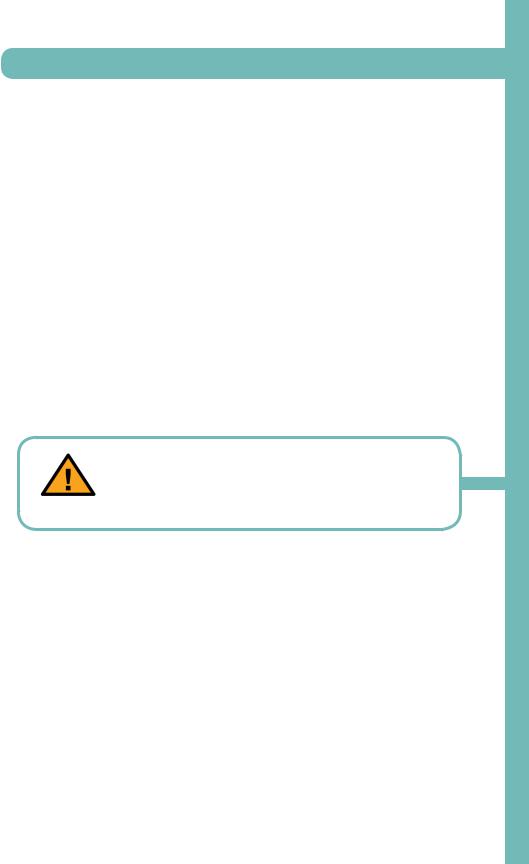
INSTALLING THE DISHWASHER
Step 5: Unpacking and Inspecting the Dishwasher
Unbox the dishwasher in an open area free of obstruction both around the carton and overhead. We recommend that you retain the carton and all of the packing materials until the dishwasher is fully installed and operational to ensure you have removed all the product’s components from the carton prior to disposal.
Unboxing
1.Unbuckle or cut the four straps securing the carton top.
2.Lift the top of the telescoping carton clear of the carton tray and the contents, and then turn it over and place it on the floor.
3.Put the straps and all of the packing materials from around the dishwasher inside the carton top, inspecting them for any signs of damage.
4.Lift the dishwasher from the carton tray, and then place it on the floor. Put the tray into the carton top.
5.Remove the bag that protects the dishwasher during shipping.
CAUTION
ALWAYS LIFT THE DISHWASHER TO MOVE IT. Sliding it over rough surfaces can damage the dishwasher’s feet
and sliding the feet over finished surfaces can, in some cases, damage that finish or the underlying surface.
6.There is also packing inside the dishwasher that you may want to leave in place until the dishwasher is installed.
7.Do not, under any circumstances, remove the sound-absorbent padding that surrounds the exterior of the tub of the dishwasher.
Mechanical Inspection
1.Check the plastic base assembly to ensure that it is intact.
2.Check the dishwasher’s feet to ensure they are in place and can be adjusted so you can level and secure the dishwasher.
3.Check all the visible components on the bottom of the dishwasher to ensure they are intact and secure.
4.Check the door latch, the operation of the hinges, and confirm the door is properly secured to the dishwasher.
12
